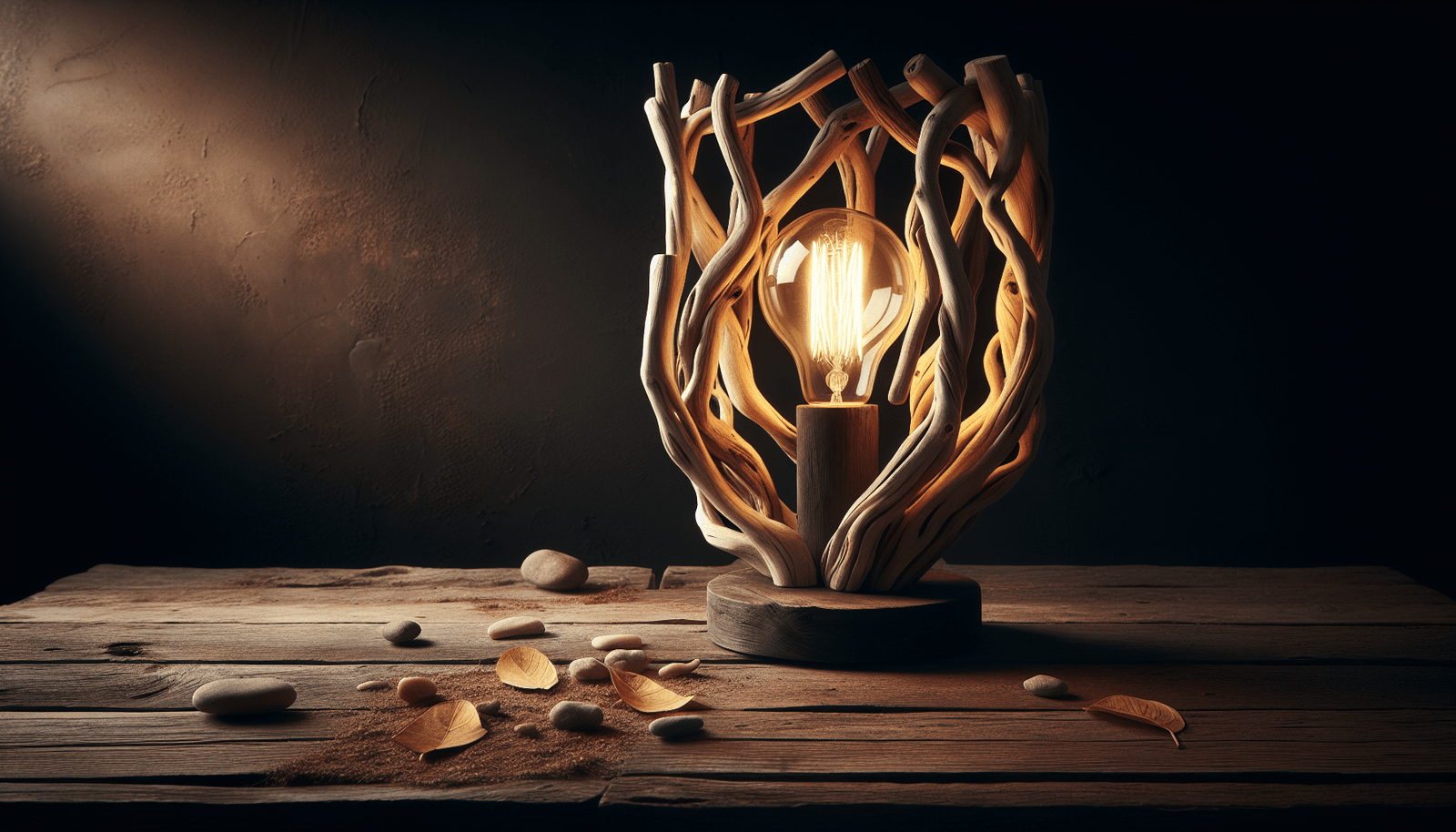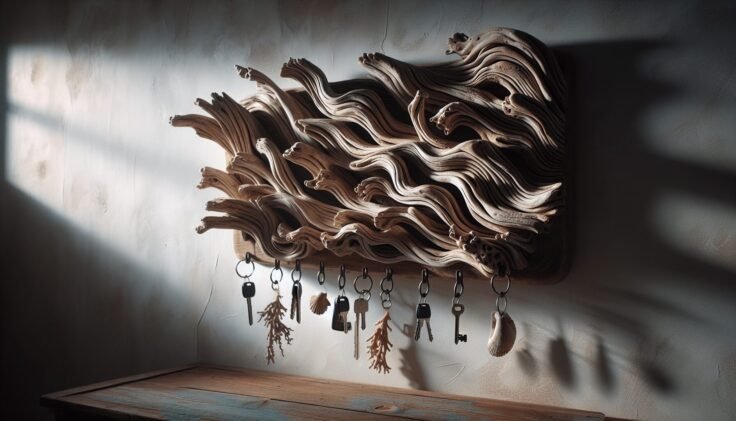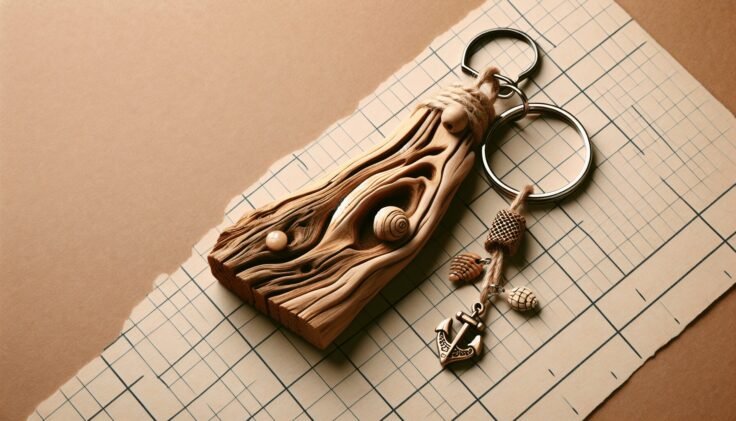Have you ever wandered along a sunlit beach and stumbled upon a uniquely shaped piece of driftwood, its weathered texture telling a story of time and tide? If so, you’re not alone! Driftwood’s natural beauty and rustic charm make it a popular choice for home decor, especially when it comes to creating stunning mobiles. Making a driftwood mobile can be a delightful and creative way to bring a piece of nature into your home. Not only is it an enjoyable project, but it also offers a wonderful opportunity to express your creativity.

What is Driftwood?
Driftwood is essentially any piece of wood that has been washed ashore by the action of tides, winds, or currents. Over time, the continuous motion of the sea smooths its surface, creating an organic, natural texture that is both visually appealing and tactile. These pieces can vary greatly in size, shape, and color, making each piece unique.
Where to Find Driftwood
Finding the right piece of driftwood is the first step in creating your mobile. Often, you’ll find driftwood on beaches along lakes, rivers, and oceans. It’s important to check local regulations before collecting driftwood, as some areas consider it a protected resource. Plan your collection during low tide when the shoreline is more exposed.
Why Choose Driftwood for a Mobile?
Driftwood is not only visually appealing but also highly durable. Its natural resilience to water makes it a lasting part of any decor feature. Moreover, using driftwood supports a sustainable lifestyle by repurposing natural materials rather than relying on manufactured products. A driftwood mobile can effortlessly blend with various interior design themes, whether you prefer modern minimalistic, rustic, or coastal.
Materials You’ll Need
Getting started on your driftwood mobile DIY project is exciting. Let’s prepare by gathering the materials and tools necessary for this craft. Ensure you have the following items ready before you start:
| Material/Tool | Purpose |
|---|---|
| Driftwood pieces | The main component of your mobile. |
| Fishing line or twine | For suspending the driftwood pieces. |
| Hooks or eye screws | To attach pieces of driftwood to each other. |
| Beads and seashells | Optional decorations to add visual interest. |
| Scissors | To cut the line or twine to the desired length. |
| Drill or screwdriver | For making holes in driftwood, if needed. |
| Sandpaper | To smooth any rough edges or surfaces on the driftwood. |
Tips on Selecting Your Materials
Choose driftwood pieces of varying lengths and widths for an attractive, layered effect. It’s essential to ensure that the twine or fishing line is durable enough to support the weight of each piece. Lightly sanding the driftwood can help ensure a safer handling experience and improve the longevity of your mobile.
Preparing Your Driftwood
Once you’ve collected your driftwood and gathered necessary materials, the next step is preparation. Preparing the driftwood is a straightforward process that ensures your creation is both a lasting and beautiful one.
Cleaning and Drying
Cleaning your driftwood before use is important to remove any residual sea salt, sand, or potential pests that might inhabit the wood. Here’s a simple cleaning process:
- Rinse the driftwood pieces thoroughly with fresh water to wash away salt and sand.
- Soak them in a mixture of water and mild bleach for a few hours. This step helps in disinfecting them.
- Rinse again and let them dry completely in a sunny spot. This could take a few days, depending on the size and thickness of the wood.
Inspecting and Sanding
After your pieces are cleaned and dried, inspect them for any sharp edges or splintering. Using sandpaper, smooth out any rough areas to prevent injury and to ensure the pieces look polished once they’re assembled.
Designing Your Mobile
The design phase is where your creativity truly gets to shine. Consider the final location of your mobile and how it might complement or contrast with existing decor.
Determining the Arrangement
A balanced design starts with experimentation. Lay out your driftwood pieces on a large flat surface and try several configurations until you find one that pleases you. Consider varying the distance between pieces and testing different combinations of long and short pieces.
Adding Additional Elements
Adding beads, seashells, or other natural elements can enhance your mobile’s aesthetic. Incorporate these elements by threading them onto the fishing line or twine, placing them between each driftwood piece for added visual interest.

Assembling Your Driftwood Mobile
With a design in mind and supplies ready, it’s time to bring your mobile to life. The assembly process requires a bit of patience and precision to ensure each piece hangs correctly.
Drilling and Connecting
For large or heavy pieces, drilling small holes for hooks or eye screws is the first step. Ensure the holes are centered to maintain balance. For lighter pieces, a simple knot may suffice.
- Drill holes where necessary on each piece of driftwood.
- Attach the eye screws or hooks.
- Tie the fishing line or twine to each piece, leaving enough length for it to dangle at your desired height.
Balancing Your Mobile
Achieving balance is crucial to ensure that your mobile hangs freely and doesn’t tip. Make adjustments as necessary by shortening or lengthening the line between pieces or shifting the position of the line along the driftwood. This process might need some trial and error, so don’t hesitate to rearrange until you’re satisfied with the balance.
Displaying Your Driftwood Mobile
Your mobile is now assembled and ready to display! Consider where it will have the most visual impact and be sure it’s safe from playful pets or areas of high traffic that could cause it to swing aggressively.
Best Places to Hang a Mobile
Driftwood mobiles look stunning in a variety of settings:
- Living rooms: An ideal space, especially near a window where natural light accentuates the wood texture.
- Bedrooms: Above the bed or in a reading nook as a comforting, calming piece.
- Outdoor spaces: Hang it on a porch or patio, but ensure it’s protected from extreme weather when necessary.
Proper Hanging Techniques
When hanging your mobile, ensure that the overhead support can handle the weight of the mobile. Using a strong ceiling hook is essential. If hanging near a window, confirm that the mobile won’t be obstructed by curtains or blinds.
Maintenance and Care
To keep your driftwood mobile looking pristine, periodic maintenance is necessary. This involves gentle cleaning and inspection to ensure the safety and aesthetic integrity of the mobile.
Cleaning Your Mobile
Over time, dust accumulation is expected. Use a soft cloth or feather duster to gently remove dust from the driftwood and additional elements. If your mobile includes easily removable decorations, you might want to clean them separately.
Long-Term Tips
Avoid exposing your mobile to excessive moisture, which could lead to mold or mildew growth. Consider occasionally inspecting the twine or fishing line for wear, which can weaken over time and potentially cause your mobile to fall.
Conclusion
Creating a driftwood mobile is an enriching experience that combines collecting, crafting, and decorating. It not only adds a personal touch to your home decor but also reminds you of the serene beauty of nature. Whether placed in your living room, bedroom, or outdoor patio, a driftwood mobile captures attention and resonates with calm. With the right tools, creativity, and a bit of patience, you can craft a piece that is distinctly yours.
If you haven’t already tried making your own driftwood mobile, maybe it’s time to plan a beach trip or visit your local lakefront for some inspiration. Remember to enjoy the process—it’s just as beautiful as the result!
















